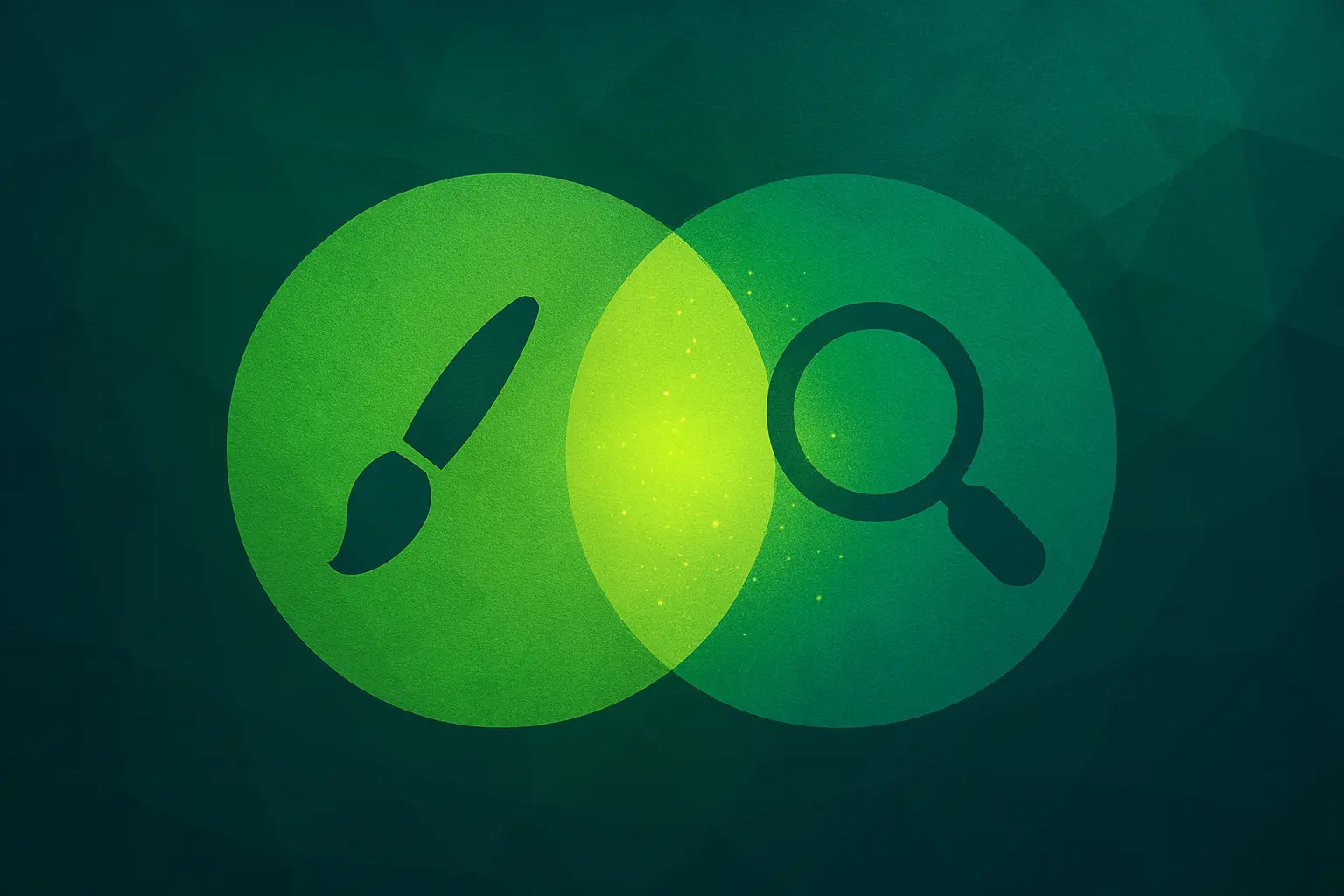Image SEO: How to Optimize Images for Google Search

Image SEO is the practice of optimizing the images on a website to make them more easily discoverable and understandable by search engines. This involves a set of specific techniques, including writing descriptive alt text, choosing the right file formats, compressing file sizes, and adding structured data, with the goal of ranking in image search results and improving overall page relevance.
Key Takeaways
- Image SEO is a critical but often overlooked component of a comprehensive search engine optimization strategy that can drive significant organic traffic.
- The primary goals are to rank in Google Images search results and to enhance the relevance and context of your web pages for traditional search.
- Key optimization tasks include writing descriptive alt text, using keyword-rich file names, compressing images for fast page loads, and choosing the right file format.
- Advanced techniques like using image sitemaps and structured data can provide search engines with even more context, further improving visibility.
- A successful image SEO strategy improves not only your search rankings but also the accessibility and user experience of your website.
Table of Contents
Beyond Decoration: Why Image SEO is a Traffic Goldmine
For many businesses, images on a website are an afterthought—a way to break up text and make the page look more appealing. While aesthetics are important, treating images as mere decoration is a massive missed opportunity. Google Images is one of the world’s largest search engines in its own right. Every day, millions of people search for products, ideas, and information using images. If your images aren’t optimized, you are completely invisible in this powerful search channel.
This is where a deliberate image SEO strategy comes in. It’s the process of making your visual content an active and contributing part of your overall SEO efforts. When done correctly, it can drive a substantial amount of high-quality traffic to your site. A user who finds your product through an image search is often a highly visual and engaged prospect.
Furthermore, well-optimized images do more than just rank on their own. They provide crucial contextual signals to search engines about the topic of your page, which can help your page rank higher in traditional web search. It improves user engagement by making your content more interesting, and it plays a vital role in page speed, which is a confirmed ranking factor. In short, a comprehensive image SEO plan is an essential component of any modern digital strategy. As a leading digital marketing agency in Karachi, we consider it a fundamental part of a holistic approach to search.
The Pillars of Image SEO: What Really Matters
A successful strategy is built on several key pillars. Each of these elements provides important information to search engines and contributes to a better user experience.
1. Alt Text: The Cornerstone of Image SEO
Alternative text, or alt text, is the most critical element of image SEO. It’s a short, written description of an image that is embedded in the HTML code.
What it does:
- For Search Engines: It provides a direct, textual description of what the image contains, as search engine crawlers cannot “see” an image in the same way a human can. This is the primary way Google understands the subject matter of your visual content.
- For Accessibility: Alt text is what screen-reading software reads aloud to visually impaired users, allowing them to understand the content of the image.
- For User Experience: If an image fails to load for any reason, the alt text will be displayed in its place, so the user still understands what was supposed to be there.
How to write good alt text:
- Be Descriptive and Specific: Instead of “dog,” write “golden retriever puppy chasing a red ball in a grassy park.”
- Keep it Concise: Aim for under 125 characters.
- Use Keywords Naturally: If it makes sense, include your target keyword or a related phrase, but do not stuff it unnaturally. For example, for a product page about a “red running shoe,” alt text like “woman tying the laces of a Nike red running shoe before a race” is perfect.
2. Descriptive, Keyword-Rich File Names
Before you even upload an image to your website, you have an opportunity to optimize it. The file name itself is a small but significant signal to search engines.
What it is: The actual name of the image file (e.g., image-seo-guide.jpg).
How to optimize it:
- Be Descriptive: Name the file with words that accurately describe what is in the image.
- Use Keywords: Include your primary or a secondary keyword for the page.
- Use Hyphens: Separate words with hyphens (-), not underscores (_) or spaces.
For example, a generic file name like IMG_9876.jpg tells a search engine nothing. A much better file name would be image-seo-alt-text-example.jpg. This simple step provides immediate context.
3. Image File Size and Compression
Image file size is one of the biggest factors affecting your website’s page load speed. Large, unoptimized images can make a page slow to a crawl, which frustrates users and will hurt your search rankings.
What it is: The process of reducing the file size of your images (in kilobytes or megabytes) as much as possible without significantly degrading their visual quality.
How to do it:
- Use Compression Tools: Use online tools like TinyPNG or Squoosh, or plugins within your CMS (like Smush for WordPress) to automatically compress images upon upload.
- Find the Right Balance: The goal is the smallest possible file size with an acceptable level of quality. For most websites, images should ideally be under 100-150 KB.
Page speed is a critical ranking factor, and images are often the biggest culprit in slowing down a site. This is a core focus of our technical SEO services.
Choosing the Right Format and Dimensions
The technical specifications of your images play a huge role in both performance and quality.
4. Selecting the Right File Format
Different image file formats are suited for different purposes. Choosing the right one can save you a lot of space and improve quality.
- JPEG: The best choice for photographs and images with many colors. It offers a good balance between file size and quality.
- PNG: Use this format when you need a transparent background, such as for logos or icons. PNG files are generally larger than JPEGs.
- WebP: A next-generation format developed by Google that provides excellent quality at a much smaller file size than JPEG or PNG. Supporting WebP is a great way to improve your site speed.
- SVG: A vector format that is perfect for logos, icons, and simple illustrations. SVGs are incredibly lightweight and can be scaled to any size without losing quality.
5. Responsive Images and Correct Sizing
You should serve images that are appropriately sized for the user’s screen. There’s no reason to load a massive, 3000-pixel-wide image on a small mobile screen.
What it is: Responsive images use HTML code (specifically the srcset attribute) to allow the browser to automatically choose and download the best-sized image from a set of options, depending on the user’s device.
Why it’s important: This practice significantly improves page load times on mobile devices, which is critical for the mobile-first indexing world we live in. We cover this topic in more detail in our article on mobile-first indexing. A properly configured website from a professional website design company will handle this automatically.
Advanced Image SEO Techniques
Once you have the fundamentals down, you can implement these more advanced strategies to gain a competitive edge.
6. Submitting an Image Sitemap
While Google can discover images as it crawls your pages, an image sitemap gives it a direct roadmap to all the visual content on your site.
What it is: An XML sitemap specifically for your images. It lists the URLs of all your important images and can include additional information like titles, captions, and licenses.
Why it’s important: An image sitemap ensures that Google can find and index all of your visual content, especially images that might be loaded with JavaScript and are harder for crawlers to discover.
7. Leveraging Structured Data (Schema Markup)
Structured data is a form of code that provides search engines with highly specific information about your content. For images, you can use schema markup to tell Google that an image is part of a product, a recipe, or an article.
What it is: Using ImageObject schema to explicitly identify your images and associate them with your content.
Why it’s important: This can help your images appear in rich results, such as the image carousels you see for product or recipe searches. This enhanced visibility can significantly increase your click-through rate. Implementing this correctly is a technical task, often handled as part of a broader on-page optimization strategy.
8. Using a Content Delivery Network (CDN)
A CDN is a network of servers distributed around the world. It stores copies of your website’s static assets, including images.
What it is: When a user visits your site, the CDN delivers the images from a server that is geographically closest to them, rather than from your main server.
Why it’s important: This dramatically reduces latency and speeds up image loading times for your international visitors, providing a better user experience for everyone.
9. The Importance of Uniqueness and Quality
In the age of stock photography, using unique, high-quality images can be a significant differentiator. Google’s algorithms are getting better at recognizing original visual content.
Having custom photography or professionally designed graphics makes your content more valuable and more likely to be shared and linked to. This is where the role of graphic design in SEO becomes clear; a visually appealing and unique image is more than just branding—it’s a linkable asset. Investing in good visuals is investing in your content’s performance. For businesses that want to stand out, our graphic design services can create the custom visuals that make your brand memorable.
10. Optimizing for User Engagement
The context in which you place your images matters. An image should be highly relevant to the surrounding text. Placing an image near the top of the page and including a descriptive caption can improve user engagement.
A caption is another piece of text that Google can use to understand the image, and it’s highly read by users. Use it to provide context or add a credit. This holistic approach to content is a core principle we teach in our guide on SEO writing.
How We Integrate Image SEO into Your Strategy
A successful image SEO plan is not an isolated task; it’s an integral part of a comprehensive SEO and content strategy. It requires a combination of technical knowledge, creative thinking, and a commitment to quality.
Our process begins with a thorough audit of your existing visual content, identifying the biggest opportunities for improvement. We then integrate image SEO best practices into every stage of the content lifecycle. From the moment a new piece of content is planned, we are thinking about the visuals that will support it. Our team of SEO specialists, writers, and designers works together to ensure that every image is not only beautiful but also perfectly optimized to drive traffic and enhance user experience. This is a standard component of our comprehensive SEO services.
Conclusion
Image SEO is a powerful, multifaceted discipline that sits at the intersection of technical optimization, content strategy, and user experience. It’s about more than just helping Google understand your pictures; it’s about creating a faster, more accessible, and more engaging experience for your visitors. By moving beyond treating images as an afterthought and embracing them as valuable assets, you can unlock a significant new source of organic traffic, enhance your brand’s authority, and gain a tangible competitive advantage in the crowded digital landscape.




